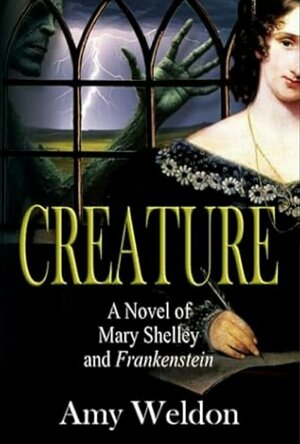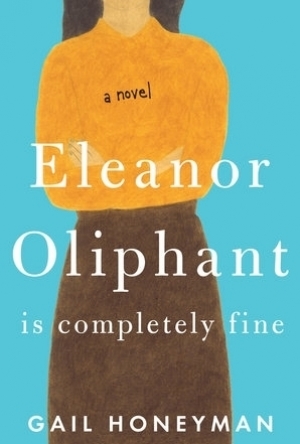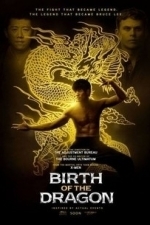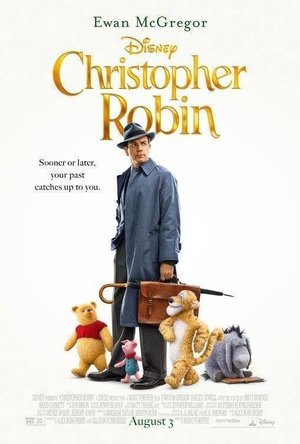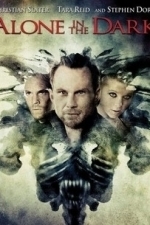Search
Search results

The Deviation (Experimental Love #3)
Book
When my quiet life fell apart, he turned up the music in my soul. How do I pretend we never...
Contemporary MM Romance Rock Star Romance Bi Awakening Forbidden Love
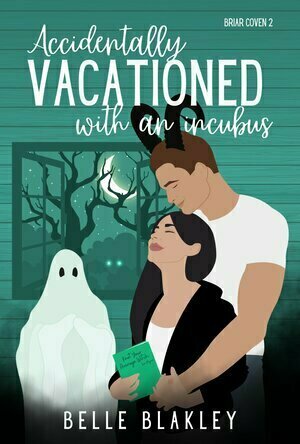
Accidentally Vacationed with an Incubus (Briar Coven, #2)
Book
He wants a connection. She wants him gone. A steamy bargain changes everything. When 27-year-old...
Romance Urban Fantasy Witches Monster Romance

Igniting His Flame (Redwood Bay Fire #1)
Book
Love makes us all brave DARIO After escaping my controlling ex-boyfriend and moving to...
ClareR (6037 KP) rated Creature: A Novel of Mary Shelley and Frankenstein in Books
Aug 27, 2025
This book tells the story of Mary Shelley, how she ran away with the poet, Percy Bysshe Shelley, in order to live the life that she wanted to live, free of the constraints of society and hopefully live up to her perception of her mother’s standards. Instead, it felt as though she was dragged around Europe by her (eventual) husband, everything at his whim, paying for freedom from society with the deaths of 4 of her 5 children.
Ok, I may be a little harsh here. Mortality rates in infants were abysmal at this point in history, but I’m. Still not a Shelley/ Byron fan 🤷🏼♀️
If it sounds as though I’m being negative, I actually loved this book. The writing is wonderfully descriptive, the perspectives swapping between Mary and (and this is what really makes this novel stand out)the Creature from the novel, Frankenstein. His life plays out at the same time as Mary’s, he grows up with her from childhood, always nearby, I’m sure she could have seen him from the corner of her eye. His life is as tragic as hers.
Reading this novel, I was standing beside Mary and her Creature, experiencing their lives with them, which was pretty hard-going at times. To experience such loss and keep going really shows Mary’s strength of character.
Mary’s life was adventurous, uncertain, unconventional, rich in experience, and pretty frustrating at times - thanks to Shelley and Byron!
This took me longer than it possibly could have to read. I kept going through the footnotes, googling, reading some of Shelley’s and Byron’s poetry - this book took over my reading entirely!
Now, where did I put my copy of Frankenstein? I might just have to reread…
I received an ARC of this book for free, and I’m reading this review voluntarily (and why wouldn’t I?!). Many thanks to the publishers, BookSirens and Amy Weldon.
Ok, I may be a little harsh here. Mortality rates in infants were abysmal at this point in history, but I’m. Still not a Shelley/ Byron fan 🤷🏼♀️
If it sounds as though I’m being negative, I actually loved this book. The writing is wonderfully descriptive, the perspectives swapping between Mary and (and this is what really makes this novel stand out)the Creature from the novel, Frankenstein. His life plays out at the same time as Mary’s, he grows up with her from childhood, always nearby, I’m sure she could have seen him from the corner of her eye. His life is as tragic as hers.
Reading this novel, I was standing beside Mary and her Creature, experiencing their lives with them, which was pretty hard-going at times. To experience such loss and keep going really shows Mary’s strength of character.
Mary’s life was adventurous, uncertain, unconventional, rich in experience, and pretty frustrating at times - thanks to Shelley and Byron!
This took me longer than it possibly could have to read. I kept going through the footnotes, googling, reading some of Shelley’s and Byron’s poetry - this book took over my reading entirely!
Now, where did I put my copy of Frankenstein? I might just have to reread…
I received an ARC of this book for free, and I’m reading this review voluntarily (and why wouldn’t I?!). Many thanks to the publishers, BookSirens and Amy Weldon.

Sugar Rush
Book
Jordy - I’ve had a giant crush on Kieran for as long as I can remember, basically as soon as his...
MM Omegaverse Romance
Kristy H (1252 KP) rated Eleanor Oliphant Is Completely Fine in Books
Dec 24, 2017
funny (3 more)
heartbreaking
tender
beautiful
Eleanor Oliphant leads a simple, albeit lonely, life. Up in the morning, head to work, and heads down at the office (with a solo break for lunch and the crossword). She spends her evenings and weekends alone--typically with a book, the TV, and a lot vodka. Every Wednesday evening, she speaks on the phone with her mother (Mummy)-- always a painful conversation as her mother is judgemental and exacting. Then one day, Eleanor and Raymond, the slightly oafish IT guy from her office, save the elderly Sammy, who has fallen on the sidewalk. The act turns out to change Eleanor's life--bringing her into Sammy's life and that of his boisterous family--and involving her more with Raymond, as well. Suddenly, it's almost as if Eleanor and Raymond are friends and Eleanor isn't completely lonely anymore. But can her friendship with Raymond erase the sadness in her life?
This book, oh this book. Wow, what a journey. I'm so very glad I finally picked it up. Where do I even begin? First of all, Honeyman captures the voice of Eleanor perfectly. I was honestly a bit surprised when I started this one. I'd been expecting a slightly quirky character (a la the lead in THE ROSIE PROJECT), but there's far more depth and darkness to Eleanor (and her tale) than I imagined. It took me a little longer to get into the story, but once I was: wow. You can visualize Eleanor and her supporting cast so clearly. Raymond comes across effortlessly too. The plot is striking-- an amazing combination of heartbreaking and tender. My heart truly broke for dear Eleanor at times.
I was intrigued by the fact that there's no real huge story, per se, to this novel--it's just Eleanor finding her way in the world. As mentioned, Eleanor and Raymond assist Sammy, and this jolts Eleanor out of her life built around routine and sameness. Forced to come out of her shell, she suddenly sees some things in a new light--her appearance, her job, her friendships (or lack thereof), her apartment, and more. The way Honeyman presents the world--through Eleanor's eyes--is uncanny. I cannot describe how well she captures her diction and how aghast Eleanor is sometimes by the world around her (dirty books from the library, people who waste her time with conversation, the food people eat and how they eat, etc.).
At the same time, you realize how much Eleanor is formed by her childhood, or lack thereof, and it's just... striking. How Honeyman gets this all across in words is amazing. The unexpected darkness and sadness that comes across in the novel and the added layer of suspense she casts as we ponder Eleanor's tragic childhood: it's chilling. The entire book is mesmerizing and beautiful.
That's not to say the book isn't funny or enjoyable, too. Eleanor is her own person, and she's witty and true to her self, for sure. You will find yourself rooting for her personality quirks (of which there are many) and all. If Eleanor's attempts to understand the world don't tug at your heartstrings, I'm not sure anything will (and I'm pretty tough nut to crack when reading, mind you). I was worried that perhaps the moral would be that Eleanor would have to change herself to find happiness, but no, I don't think that was Honeyman's ultimate intent, even if Eleanor does make some "improvements" along the way. (I won't say more for risk of spoilers.) Also, I loved Raymond, as well; his mother; Glen (!!!!); and so many other parts of the story that made me smile. Seriously, even with its sad parts, this book just makes you happy.
Ultimately, this is lovely book, with beautiful, well-written characters. The tale of Eleanor Oliphant will stay with me for a long time, and I'm so glad I finally decided to read this book. Honeyman is an excellent writer, her depiction of Eleanor is gorgeous and heart-rendering and the few flaws I found with this were so minor, as I was left just awed by the end. One of my favorites so far this year.
This book, oh this book. Wow, what a journey. I'm so very glad I finally picked it up. Where do I even begin? First of all, Honeyman captures the voice of Eleanor perfectly. I was honestly a bit surprised when I started this one. I'd been expecting a slightly quirky character (a la the lead in THE ROSIE PROJECT), but there's far more depth and darkness to Eleanor (and her tale) than I imagined. It took me a little longer to get into the story, but once I was: wow. You can visualize Eleanor and her supporting cast so clearly. Raymond comes across effortlessly too. The plot is striking-- an amazing combination of heartbreaking and tender. My heart truly broke for dear Eleanor at times.
I was intrigued by the fact that there's no real huge story, per se, to this novel--it's just Eleanor finding her way in the world. As mentioned, Eleanor and Raymond assist Sammy, and this jolts Eleanor out of her life built around routine and sameness. Forced to come out of her shell, she suddenly sees some things in a new light--her appearance, her job, her friendships (or lack thereof), her apartment, and more. The way Honeyman presents the world--through Eleanor's eyes--is uncanny. I cannot describe how well she captures her diction and how aghast Eleanor is sometimes by the world around her (dirty books from the library, people who waste her time with conversation, the food people eat and how they eat, etc.).
At the same time, you realize how much Eleanor is formed by her childhood, or lack thereof, and it's just... striking. How Honeyman gets this all across in words is amazing. The unexpected darkness and sadness that comes across in the novel and the added layer of suspense she casts as we ponder Eleanor's tragic childhood: it's chilling. The entire book is mesmerizing and beautiful.
That's not to say the book isn't funny or enjoyable, too. Eleanor is her own person, and she's witty and true to her self, for sure. You will find yourself rooting for her personality quirks (of which there are many) and all. If Eleanor's attempts to understand the world don't tug at your heartstrings, I'm not sure anything will (and I'm pretty tough nut to crack when reading, mind you). I was worried that perhaps the moral would be that Eleanor would have to change herself to find happiness, but no, I don't think that was Honeyman's ultimate intent, even if Eleanor does make some "improvements" along the way. (I won't say more for risk of spoilers.) Also, I loved Raymond, as well; his mother; Glen (!!!!); and so many other parts of the story that made me smile. Seriously, even with its sad parts, this book just makes you happy.
Ultimately, this is lovely book, with beautiful, well-written characters. The tale of Eleanor Oliphant will stay with me for a long time, and I'm so glad I finally decided to read this book. Honeyman is an excellent writer, her depiction of Eleanor is gorgeous and heart-rendering and the few flaws I found with this were so minor, as I was left just awed by the end. One of my favorites so far this year.
Mothergamer (1607 KP) rated The Green Hornet (2011) in Movies
Apr 3, 2019
I don't even have the words for how infuriated I am right now with The Green Hornet film. There's a small part of me that wishes I could just throw a brick at Seth Rogen's crotch right now, because he absolutely deserves it along with director Michael Gondry. That's right, the director of the film Eternal Sunshine Of The Spotless Mind which to me was a good movie is responsible for this equally terrible movie.
I do feel much of the blame lies with the fact that Seth Rogen co-wrote this screenplay and he claimed that he was so glad he didn't screw up one of his favorite childhood heroes. Seth, Seth, Seth....tsk tsk, someone's a dirty rotten liar Seth. Why must you constantly lie to us Seth? The truth is you messed up completely! In the original radio show, comics, and T.V. Show Britt Reid wasn't a moron. He was a smart successful newspaper publisher, he was confident, and he could fight well alongside his equally confident sidekick Kato. I loved the T.V. show and I loved the comic. I loved watching The Green Hornet on Kung Fu Saturday when I was a kid. That was the highlight of my Saturday. I would watch a couple of episodes of The Green Hornet and then watch the featured kung fu film. That's a sacred childhood memory and you, Seth Rogen along with your director have pissed all over it.
Not only did you make Britt Reid a total jerk, you made him stupid too! He loosely based Britt Reid on Paris Hilton? Are you kidding me with this nonsense?
Seth Rogen's Britt Reid is a spoiled rich brat who shows no interest in running the newspaper, but he instead becomes buddies with Kato his mechanic and coffee maker. I felt bad for Jay Chou because he's no Bruce Lee, but he did alright in spite of Seth Rogen constantly hyperventilating and shouting in every scene. He tried, he really did. Cameron Diaz's role as Reid's secretary Lenore Case is completely useless. She's basically camera filler with a great smile.
Of course, The Green Hornet has to have a villain and that is Christoph Waltz (Oscar winner from Inglorious Basterds) as Chudnofsky, but there is no depth to the character which proves bad writing is bad writing. Now I like action scenes as much as the next person, but it's as if Seth Rogen got bored and just added as much action as possible as filler rather than having an actual plot that tells the story. There's also so much pointless dialogue, watching this train wreck of a film is like being stuck in a dentist's chair having a root canal with no anesthesia. Yes, it's that damn bad. Not even the overpriced 3-D could save this film. That is just a gimmick to get more money out of people and this film proved that point real quick.
There is so much that could have been done to make this film version of the T.V. show great, but none of it was done. Instead, we get a film that is so terrible with no plot at all, a fake Britt Reid (I don't care what you say Rogen, that character you played was NOT Britt Reid! You are a liar sir!), a subdued Kato that got overshadowed by the crazy rich brat, a useless vapid secretary, and a villain that's about as threatening as a labradoodle. Seth Rogen and Michale Gondry you should be ashamed and embarrassed that your names are on this piece of trash.
Don't waste your money on this folks and certainly don't waste it on 3-D. The original is better and I'm sure that Mr. Rogen's going to have several bricks thrown at his crotch for even writing this awful screenplay. Just please, do us a favor and go sit in the corner with M. Night Shyamalan and quit making movies, because you really screwed the pooch on this one pal.
I do feel much of the blame lies with the fact that Seth Rogen co-wrote this screenplay and he claimed that he was so glad he didn't screw up one of his favorite childhood heroes. Seth, Seth, Seth....tsk tsk, someone's a dirty rotten liar Seth. Why must you constantly lie to us Seth? The truth is you messed up completely! In the original radio show, comics, and T.V. Show Britt Reid wasn't a moron. He was a smart successful newspaper publisher, he was confident, and he could fight well alongside his equally confident sidekick Kato. I loved the T.V. show and I loved the comic. I loved watching The Green Hornet on Kung Fu Saturday when I was a kid. That was the highlight of my Saturday. I would watch a couple of episodes of The Green Hornet and then watch the featured kung fu film. That's a sacred childhood memory and you, Seth Rogen along with your director have pissed all over it.
Not only did you make Britt Reid a total jerk, you made him stupid too! He loosely based Britt Reid on Paris Hilton? Are you kidding me with this nonsense?
Seth Rogen's Britt Reid is a spoiled rich brat who shows no interest in running the newspaper, but he instead becomes buddies with Kato his mechanic and coffee maker. I felt bad for Jay Chou because he's no Bruce Lee, but he did alright in spite of Seth Rogen constantly hyperventilating and shouting in every scene. He tried, he really did. Cameron Diaz's role as Reid's secretary Lenore Case is completely useless. She's basically camera filler with a great smile.
Of course, The Green Hornet has to have a villain and that is Christoph Waltz (Oscar winner from Inglorious Basterds) as Chudnofsky, but there is no depth to the character which proves bad writing is bad writing. Now I like action scenes as much as the next person, but it's as if Seth Rogen got bored and just added as much action as possible as filler rather than having an actual plot that tells the story. There's also so much pointless dialogue, watching this train wreck of a film is like being stuck in a dentist's chair having a root canal with no anesthesia. Yes, it's that damn bad. Not even the overpriced 3-D could save this film. That is just a gimmick to get more money out of people and this film proved that point real quick.
There is so much that could have been done to make this film version of the T.V. show great, but none of it was done. Instead, we get a film that is so terrible with no plot at all, a fake Britt Reid (I don't care what you say Rogen, that character you played was NOT Britt Reid! You are a liar sir!), a subdued Kato that got overshadowed by the crazy rich brat, a useless vapid secretary, and a villain that's about as threatening as a labradoodle. Seth Rogen and Michale Gondry you should be ashamed and embarrassed that your names are on this piece of trash.
Don't waste your money on this folks and certainly don't waste it on 3-D. The original is better and I'm sure that Mr. Rogen's going to have several bricks thrown at his crotch for even writing this awful screenplay. Just please, do us a favor and go sit in the corner with M. Night Shyamalan and quit making movies, because you really screwed the pooch on this one pal.
Mothergamer (1607 KP) rated Birth of the Dragon (2016) in Movies
Apr 3, 2019
At first I was curious about the movie that was meant to be about Bruce Lee titled Birth of the Dragon. I love Bruce Lee. I grew up watching his movies, I watched episodes of The Green Hornet, and I voraciously read everything I could about him. One of my titos (that's Tagalog for uncle) told me about how he met Bruce Lee before and how kind he was. I am Filipino and white so I grew up with both these cultures and I'm grateful for it. My family has all kinds of people from all over and all walks of life and I love them dearly. When I would visit my Filipino family I loved that we would often gather round together on the couch with popcorn and snacks and watch Bruce Lee movies. This was special and it's one of my favorite memories from my childhood. I would watch Kung Fu Saturday when I was a kid and I would be excited when they would feature a Bruce Lee movie. My grandparents weren't really into it, but they would watch with me and my brother Rob sometimes.
I will always love Bruce Lee and his movies. He was an incredible person and so talented. Watching his movies was a huge part of my childhood and when I see that there's a Bruce Lee movie on, I always watch it.
I didn't know anything about Birth of the Dragon. There was a trailer that looked interesting. Then I kept hearing negative things about the film such as it's racist towards Asians and they made Bruce Lee the secondary character yet claimed it was a biopic about him. Then I read this: http://www.asamnews.com/2016/09/29/birth-of-the-dragon-biopic-enrages-bruce-lee-fans-buries-asians-in-favor-of-a-white-guy/
Birth of the Dragon is disappointing to me for this. It IS insulting to Asians and if we're really being brutally honest, it IS insulting not only to Bruce Lee, but to his family and friends who loved him. I don't understand making the white guy the main character when this was shopped as a Bruce Lee biopic. On top of this, it seems they made Bruce Lee appear to be this very one sided character who was just arrogant and stupid and it's simply not true. While Lee himself owned up to being foolish when he was younger, he was never stupid. Bruce Lee thought about each and every thing he did and in his movies there was always a political theme and the ideas expressed were intricate and well thought out. They provoked ideas and discussions as well as entertained. Read any of his books on martial arts and you see a deep philosophy and calm practicality to his teachings that show someone who was an incredibly thoughtful person.
The Filipino kid in me is extremely disappointed by this and a little angry too because Bruce Lee is one of my heroes and I'm disgusted by what appears to be blatantly anti-Asian propaganda in a film that was being sold as a biopic about him. This is irresponsible and Asian people have every right to be angry about this because once again Hollywood is shoving us into the background and telling us we're not as important because we're not white. I loved Bruce Lee because he was amazing and I loved that there was an Asian person who was the main character in his movies; someone like me and my brothers and my sister. That meant something to me and it still does. The people who made this movie should apologize for the horrible lie they told about this being a biopic about Bruce Lee and at least be honest about what it really is a film stating that white people are better than us. We'll never get that apology of course because these are the kinds of people who run Hollywood and have for years. I do know that I for one will not see this film and I will watch Bruce Lee's movies and celebrate the amazing person he was.
I will always love Bruce Lee and his movies. He was an incredible person and so talented. Watching his movies was a huge part of my childhood and when I see that there's a Bruce Lee movie on, I always watch it.
I didn't know anything about Birth of the Dragon. There was a trailer that looked interesting. Then I kept hearing negative things about the film such as it's racist towards Asians and they made Bruce Lee the secondary character yet claimed it was a biopic about him. Then I read this: http://www.asamnews.com/2016/09/29/birth-of-the-dragon-biopic-enrages-bruce-lee-fans-buries-asians-in-favor-of-a-white-guy/
Birth of the Dragon is disappointing to me for this. It IS insulting to Asians and if we're really being brutally honest, it IS insulting not only to Bruce Lee, but to his family and friends who loved him. I don't understand making the white guy the main character when this was shopped as a Bruce Lee biopic. On top of this, it seems they made Bruce Lee appear to be this very one sided character who was just arrogant and stupid and it's simply not true. While Lee himself owned up to being foolish when he was younger, he was never stupid. Bruce Lee thought about each and every thing he did and in his movies there was always a political theme and the ideas expressed were intricate and well thought out. They provoked ideas and discussions as well as entertained. Read any of his books on martial arts and you see a deep philosophy and calm practicality to his teachings that show someone who was an incredibly thoughtful person.
The Filipino kid in me is extremely disappointed by this and a little angry too because Bruce Lee is one of my heroes and I'm disgusted by what appears to be blatantly anti-Asian propaganda in a film that was being sold as a biopic about him. This is irresponsible and Asian people have every right to be angry about this because once again Hollywood is shoving us into the background and telling us we're not as important because we're not white. I loved Bruce Lee because he was amazing and I loved that there was an Asian person who was the main character in his movies; someone like me and my brothers and my sister. That meant something to me and it still does. The people who made this movie should apologize for the horrible lie they told about this being a biopic about Bruce Lee and at least be honest about what it really is a film stating that white people are better than us. We'll never get that apology of course because these are the kinds of people who run Hollywood and have for years. I do know that I for one will not see this film and I will watch Bruce Lee's movies and celebrate the amazing person he was.
Movie Metropolis (309 KP) rated Christopher Robin (2018) in Movies
Jun 10, 2019 (Updated Jun 10, 2019)
A Future Classic
The characters of Pooh, Eeyore, Piglet and Tigger are synonymous with the childhood of millions of adults across the globe. A.A. Milne’s classic creatures are etched into the memories of many, passed down through generations with tatty old story books and stuffed animals.
Their film history is a little more chequered. True box-office domination has eluded the little critters, until now at least. Rolling off the success of Paddington and its arguably even better sequel, Disney gets in on the action, the live-action that is, and brings Pooh and co to life in Christopher Robin. But does it work?
Christopher Robin (Ewan McGregor) – now a family man living in London – receives a surprise visit from his old childhood pal, Winnie-the-Pooh. With Christopher’s help, Pooh embarks on a journey to find his friends — Tigger, Eeyore, Owl, Piglet, Rabbit, Kanga and Roo. Once reunited, the lovable bear and the gang travel to London to help Christopher rediscover the joy of life.
With Marc Forster’s name attached to directing duties, you’d be forgiven for thinking he’d been hired simply to get the job done. After all, this is the same Marc Forster that brought us the perfectly adequate Quantum of Solace and the enjoyable if undistinguished World War Z. These aren’t the directing credits you’d expect when looking at a film involving a honey-loving bear in a red jumper.
Nevertheless, Forster proves us wrong. Christopher Robin is a sumptuous tale, beautifully realised with a script that makes us stop and look at the little things in life. Much like the film itself as it happens. Ewan McGregor was the ideal choice to play a world-weary Robin. At the brink of exhaustion and close to losing the truly important things in life – his wife (Hayley Atwell) and daughter (Bronte Carmichael), McGregor plays the part beautifully. Watching his inner-child slowly but surely rise to the surface is wonderful to see.
Elsewhere, the entire cast of voices used to bring our cuddly cast to life are absolutely spot on. Jim Cummings’ return as Pooh and Tigger brings a warm familiarity to proceedings and this was a nice touch by Disney to have him back behind the microphone. Toby Jones and former Doctor Who Peter Capaldi are also great as Owl and Rabbit respectively. Brad Garrett’s turn as Eeyore really couldn’t be more perfect.
Christopher Robin…is sure to be a future classic that can be passed down for generations
To look at, Christopher Robin really is sublime. The spectacular Sussex countryside is brought to life in the Hundred Acre Wood and the post-war setting of London lives and breathes right before your eyes. This is a film that draws you in as the script moves our cast from 1940s London, rich with smoke and smog, to lush countryside, heavy with dew and dripping in colour.
The CGI to bring Pooh, Piglet, Eeyore, Tigger, Kanga, Roo, Owl and Rabbit to life is nothing short of astounding. The way their fur moves in the wind feels so real and it is this depth that proves to be the film’s strongest suit. Using Disney’s seemingly unending source of funds, Marc Foster and his team have managed to create something truly astonishing.
Above all though, this is a film about the importance of family, and on that level it succeeds, and then some. While brief, the moments in which we see McGregor and his family spending time together, with Pooh and company in tow, are Christopher Robin’s most poignant. In typical Disney fashion, the film tugs on the heartstrings on more than one occasion, just enough to wipe away a solitary tear, but not enough to dig out the Kleenex.
Christopher Robin is another success for Disney’s live-action arm. With understated performances, very much similar to 2016’s remake of Pete’s Dragon, the House of Mouse has achieved something rather extraordinary. Yes, they’ve brought these wonderful characters back to life, but in a way that honours the books and stuffed animals we will have all grown up with. Unlike this year’s Peter Rabbit that destroyed the legacy of a much-loved literary character, Christopher Robin builds on that and is sure to be a future classic that can be passed down for generations.
https://moviemetropolis.net/2018/08/18/christopher-robin-review-a-future-classic/
Their film history is a little more chequered. True box-office domination has eluded the little critters, until now at least. Rolling off the success of Paddington and its arguably even better sequel, Disney gets in on the action, the live-action that is, and brings Pooh and co to life in Christopher Robin. But does it work?
Christopher Robin (Ewan McGregor) – now a family man living in London – receives a surprise visit from his old childhood pal, Winnie-the-Pooh. With Christopher’s help, Pooh embarks on a journey to find his friends — Tigger, Eeyore, Owl, Piglet, Rabbit, Kanga and Roo. Once reunited, the lovable bear and the gang travel to London to help Christopher rediscover the joy of life.
With Marc Forster’s name attached to directing duties, you’d be forgiven for thinking he’d been hired simply to get the job done. After all, this is the same Marc Forster that brought us the perfectly adequate Quantum of Solace and the enjoyable if undistinguished World War Z. These aren’t the directing credits you’d expect when looking at a film involving a honey-loving bear in a red jumper.
Nevertheless, Forster proves us wrong. Christopher Robin is a sumptuous tale, beautifully realised with a script that makes us stop and look at the little things in life. Much like the film itself as it happens. Ewan McGregor was the ideal choice to play a world-weary Robin. At the brink of exhaustion and close to losing the truly important things in life – his wife (Hayley Atwell) and daughter (Bronte Carmichael), McGregor plays the part beautifully. Watching his inner-child slowly but surely rise to the surface is wonderful to see.
Elsewhere, the entire cast of voices used to bring our cuddly cast to life are absolutely spot on. Jim Cummings’ return as Pooh and Tigger brings a warm familiarity to proceedings and this was a nice touch by Disney to have him back behind the microphone. Toby Jones and former Doctor Who Peter Capaldi are also great as Owl and Rabbit respectively. Brad Garrett’s turn as Eeyore really couldn’t be more perfect.
Christopher Robin…is sure to be a future classic that can be passed down for generations
To look at, Christopher Robin really is sublime. The spectacular Sussex countryside is brought to life in the Hundred Acre Wood and the post-war setting of London lives and breathes right before your eyes. This is a film that draws you in as the script moves our cast from 1940s London, rich with smoke and smog, to lush countryside, heavy with dew and dripping in colour.
The CGI to bring Pooh, Piglet, Eeyore, Tigger, Kanga, Roo, Owl and Rabbit to life is nothing short of astounding. The way their fur moves in the wind feels so real and it is this depth that proves to be the film’s strongest suit. Using Disney’s seemingly unending source of funds, Marc Foster and his team have managed to create something truly astonishing.
Above all though, this is a film about the importance of family, and on that level it succeeds, and then some. While brief, the moments in which we see McGregor and his family spending time together, with Pooh and company in tow, are Christopher Robin’s most poignant. In typical Disney fashion, the film tugs on the heartstrings on more than one occasion, just enough to wipe away a solitary tear, but not enough to dig out the Kleenex.
Christopher Robin is another success for Disney’s live-action arm. With understated performances, very much similar to 2016’s remake of Pete’s Dragon, the House of Mouse has achieved something rather extraordinary. Yes, they’ve brought these wonderful characters back to life, but in a way that honours the books and stuffed animals we will have all grown up with. Unlike this year’s Peter Rabbit that destroyed the legacy of a much-loved literary character, Christopher Robin builds on that and is sure to be a future classic that can be passed down for generations.
https://moviemetropolis.net/2018/08/18/christopher-robin-review-a-future-classic/
Darren (1599 KP) rated Alone in the Dark (2005) in Movies
Jun 20, 2019
Story: I am going to first look at this only as a story, no opinions on the CGI or casting choices. If you were to look at the story as a solo idea you get a solid action horror. Now I hear people going ‘no its just crap’ so let’s look at the details. First off we have an idea of scientific experiment on children to create sleepers, but something goes wrong so we don’t see why it happened until more discoveries in the future. Then we have a search for hidden treasures of a lost ancient people. Add in a paranormal investigator, a secret government paranormal investigating team and the search for a truth. Now looking at those factors we should have a good story not special but enjoyable. Now with terrible casting decisions, awful CGI and a script that could have been written but a child everything goes south fast. As an idea for a story this is good, but as an execution of a story it’s bad. (5/10)
Actor Review
Christian Slater: Edward Carnby a paranormal investigator who has been trying to uncover the truth about his childhood, this puts him in danger as this time he has got closer than ever before. He must team up with his old organisation to final uncover the truth that has lost him the memories of his childhood. Slater strolls for this role without showing any of the skills that made him a star in the early 90s. (5/10)
slater
Tara Reid: Aline Cedrac assistant curator at the museum who also happens to be Edward’s girlfriend, she gets caught up in the middle of the battle after she uncover the location of the door. Going to take a deep breath before going for this one, just no how did this happen? Try your luck in romantic comedies. (2/10)
reid
Stephen Dorff: Commander Burke leader of a military team trying to keep the monsters away from the public, old partner of Edward but after seeing the truth he teams up with them to uncover the truth. Stephen can act and has proven it many times, just need to give him something to work with. (4/10)
dorff
Frank C Turner: Sam an old connection within the organisation that still communicates with Edward, he fills in the science gaps and you can guess what happens to him by the end. Basic supporting performance. (4/10)
fisher
Matthew Walker: Professor Hudgens scientist trying to open the door to the truth about the ancient people, he will do anything to get his answers including sacrificing anybody who gets in his way. As villains go this is generic one that doesn’t need too much to make them special. (4/10)
profes
Director Review: Uwe Boll – He not only managed to mess up a relatively easy story with awful CGI and lack of directing ideas. (2/10)
Action: Plenty of guns being fired, not sure if they ever hit anything as everything is in the pitch black. (3/10)
Horror: Doesn’t give you any scares, frights, well made with the acting. (1/10)
Settings: The settings used for the gun fights are used well, because they would make real settings for such a discover if someone wanted to keep it quiet. (6/10)
Special Effects: Terrible special effects that I only saw one good one and that was a soldier’s head split in two. (1/10)
Suggestion: I think if you are bored one night and this is on it would be acceptable to watch it as it slips close to the line of so bad you have to see. (Late Night TV)
Best Part: The idea
Worst Part: The CGI, Acting and Execution of the idea.
Believability: No (0/10)
Chances of Tears: No (0/10)
Chances of Sequel: Actually has one sequel
Post Credits Scene: No
Oscar Chances: No
Box Office: $10 Million
Budget: $20 Million
Runtime: 1 Hour 39 Minutes
Tagline: Can mankind defeat the army of darkness unleashed by an ancient evil cult?
Overall: Not only did this film destroy the source material, it ruined any chance the video game had of returning.
https://moviesreview101.com/2014/11/09/alone-in-the-dark-2005/
Actor Review
Christian Slater: Edward Carnby a paranormal investigator who has been trying to uncover the truth about his childhood, this puts him in danger as this time he has got closer than ever before. He must team up with his old organisation to final uncover the truth that has lost him the memories of his childhood. Slater strolls for this role without showing any of the skills that made him a star in the early 90s. (5/10)
slater
Tara Reid: Aline Cedrac assistant curator at the museum who also happens to be Edward’s girlfriend, she gets caught up in the middle of the battle after she uncover the location of the door. Going to take a deep breath before going for this one, just no how did this happen? Try your luck in romantic comedies. (2/10)
reid
Stephen Dorff: Commander Burke leader of a military team trying to keep the monsters away from the public, old partner of Edward but after seeing the truth he teams up with them to uncover the truth. Stephen can act and has proven it many times, just need to give him something to work with. (4/10)
dorff
Frank C Turner: Sam an old connection within the organisation that still communicates with Edward, he fills in the science gaps and you can guess what happens to him by the end. Basic supporting performance. (4/10)
fisher
Matthew Walker: Professor Hudgens scientist trying to open the door to the truth about the ancient people, he will do anything to get his answers including sacrificing anybody who gets in his way. As villains go this is generic one that doesn’t need too much to make them special. (4/10)
profes
Director Review: Uwe Boll – He not only managed to mess up a relatively easy story with awful CGI and lack of directing ideas. (2/10)
Action: Plenty of guns being fired, not sure if they ever hit anything as everything is in the pitch black. (3/10)
Horror: Doesn’t give you any scares, frights, well made with the acting. (1/10)
Settings: The settings used for the gun fights are used well, because they would make real settings for such a discover if someone wanted to keep it quiet. (6/10)
Special Effects: Terrible special effects that I only saw one good one and that was a soldier’s head split in two. (1/10)
Suggestion: I think if you are bored one night and this is on it would be acceptable to watch it as it slips close to the line of so bad you have to see. (Late Night TV)
Best Part: The idea
Worst Part: The CGI, Acting and Execution of the idea.
Believability: No (0/10)
Chances of Tears: No (0/10)
Chances of Sequel: Actually has one sequel
Post Credits Scene: No
Oscar Chances: No
Box Office: $10 Million
Budget: $20 Million
Runtime: 1 Hour 39 Minutes
Tagline: Can mankind defeat the army of darkness unleashed by an ancient evil cult?
Overall: Not only did this film destroy the source material, it ruined any chance the video game had of returning.
https://moviesreview101.com/2014/11/09/alone-in-the-dark-2005/
